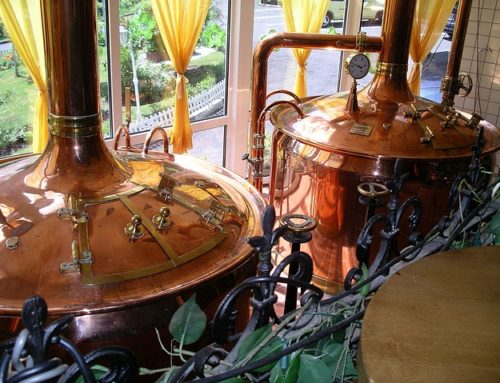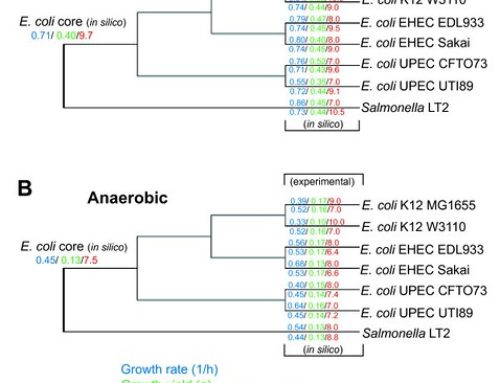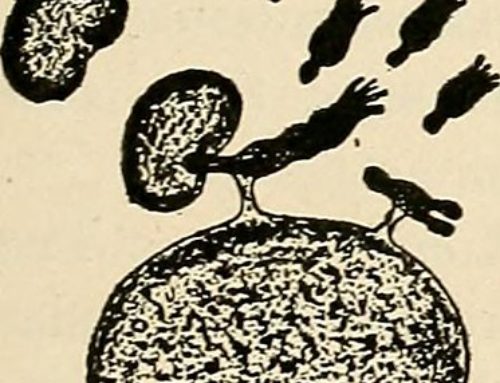- Bacterial metabolism results in products that are used for the synthesis of cellular constituents, like peptidoglycan, LPS, proteins, nucleic acids, etc.. You learned about the mechanisms of bacterial transcription of mRNA, DNA replication (including types of mutations that can occur), and translation of proteins in biochemistry.
- Since bacteria do not have a nuclear membrane, transcription and translation are coupled.
- The bacterial cytoplasmic membrane is the site for many of the functions carried out by specialized eukaryotic organelles, including electron transport and energy production.
- Synthesis of peptidoglycan occurs in 3 phases, each of which can be inhibited by various antibiotics:
- Precursor subunits are synthesized and assembled inside the cell
- the antibiotics, fosfomycin and cycloserine, inhibit precursor synthesis in the cytoplasm.
- At the membrane the units are attached to the bactoprenol “conveyer belt”.
- Precursor subunits are synthesized and assembled inside the cell
-
- The bactoprenol molecule translocates the subunits to the outside of the cell, where they are attached to the polysaccharide chain (the antibiotic, vancomycin, inhibits this polymerization reaction). Crosslinking of the tetrapeptide chains between the NAM-NAG glycan chains of peptidoglycan is catalyzed by enzymes called transpeptidases. These enzymes are also called penicillin-binding proteins (PBP) because they are the target of β-lactam antibiotics, such as penicillin, which bind to them. Transpeptidases are present in the cell membrane of Gram-positive and Gram-negative bacterial cells.
-
-
- Bactoprenol is normally recycled; the antibiotic, bacitracin, inhibits the re-use of bactoprenol.
-
Teichoic acid is synthesized from precursors in a similar manner as peptidoglycan.
Lipopolysaccharide (LPS) Synthesis
-
- Lipid A and core portions are enzymatically synthesized at the inside surface of the cytoplasmic membrane.
-
- Repeating units of the O antigen are assembled on a bactoprenol molecule and transferred to a growing O antigen chain.
-
- The completed O antigen chain is transferred to the core lipid A structure.
-
- The LPS molecule is then translocated through adhesion sites to the outer surface of the outer membrane.
Photo by phylofigures







Leave a Reply